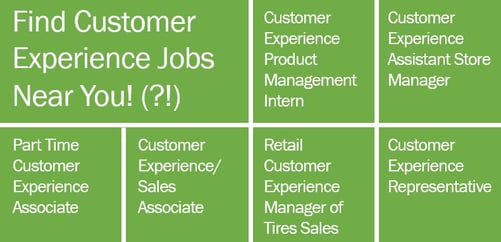When “customer experience” can mean just about anything...how do you define it for your needs?

Given the prevalence of “customer experience” as a desired competitive differentiator, business discipline, and value driver, you’d think it would be easy to define–and that a common understanding of what it means would be immediately at hand. Think again. But for companies to succeed at the discipline of customer experience management, it’s important to first define what that means to the organization, and what they wish to achieve as a result of becoming a customer-first, customer-centric organization. The payoff will be tangible if this foundational work is done.
Today, customer experience is used with the same reverence as other business watch words such as “innovation,” “brand” and “strategy.” Everyone knows they need to do it, and that they need to do it well. Which is really hard to do, when it appears to mean different things to different people, and the organizations they work for.

For example, I recently received an email with a subject line asking “Is customer experience management a priority for your organization in 2016…?” And the payoff was that if so, I’d better buy some affiliate marketing management software. I know I was confused.
And as you can see by the customer experience jobs on offer below, customer experience-related titles cover a wide range of responsibilities. Ranging from retail tire sales to user experience design, it’s clear that customer experience means different things to different organizations.

Some of these jobs (e.g. Senior Architect, Customer Experience and Director of Customer Experience) are about designing and delivering CX at an organizational level – jobs related to customer experience management. Yet many conflate customer experience with marketing, product management, customer service and more. All are about managing or delivering the impressions that a company wants to make, based on “inside-out” views of the customer.
For the most part, they describe company or product (vs. customer) centric roles. Customer experience, on the other hand, is by its nature an “outside-in” view of an organization – looking at the process of interacting with your firm and the relationship they have with you from the perspective of the customer.
Simply stated:
Customer experience is how customers feel as a result of doing business with your company. It lives between the ears of your customer, and is defined by them.
Customer experience management is the process of designing, delivering and reacting to customer interactions in ways that meet or exceed customer expectations.
In other words, customer experience is driven by the customer’s perception. Customer experience management is what companies do to ensure they have the right people, processes, information and technology in place to better deliver on customer expectations. As for the rest? Marketing is, well, marketing. Sales is sales and service, service. By confusing the meaning of and role for customer experience, the end goal of becoming customer centric isn’t helped. At all.
The point of this article isn’t to try and shift the tide of conversation around customer experience and the ways it is being used, misused and confused in the marketplace (though that would be nice!), but to help communicate and reinforce the understanding that your company doesn’t define customer experience. Customers do. As a company, your job is to understand and manage it.
So, what can you do? Make it a priority to understand what it is your customers feel, and why. And assess and develop the series of capabilities that will allow your company – in a consistent, systematic and scalable manner – to design and predictably deliver the kinds of experiences that actually do differentiate you from the competition, driving customer loyalty and value as a result.
For companies to truly succeed at the discipline of customer experience management, they need to first define what that means, and what they wish to achieve as a result. As nice as it would be, simply saying the words or changing a job title (or two) won’t make the customer experience any better.

